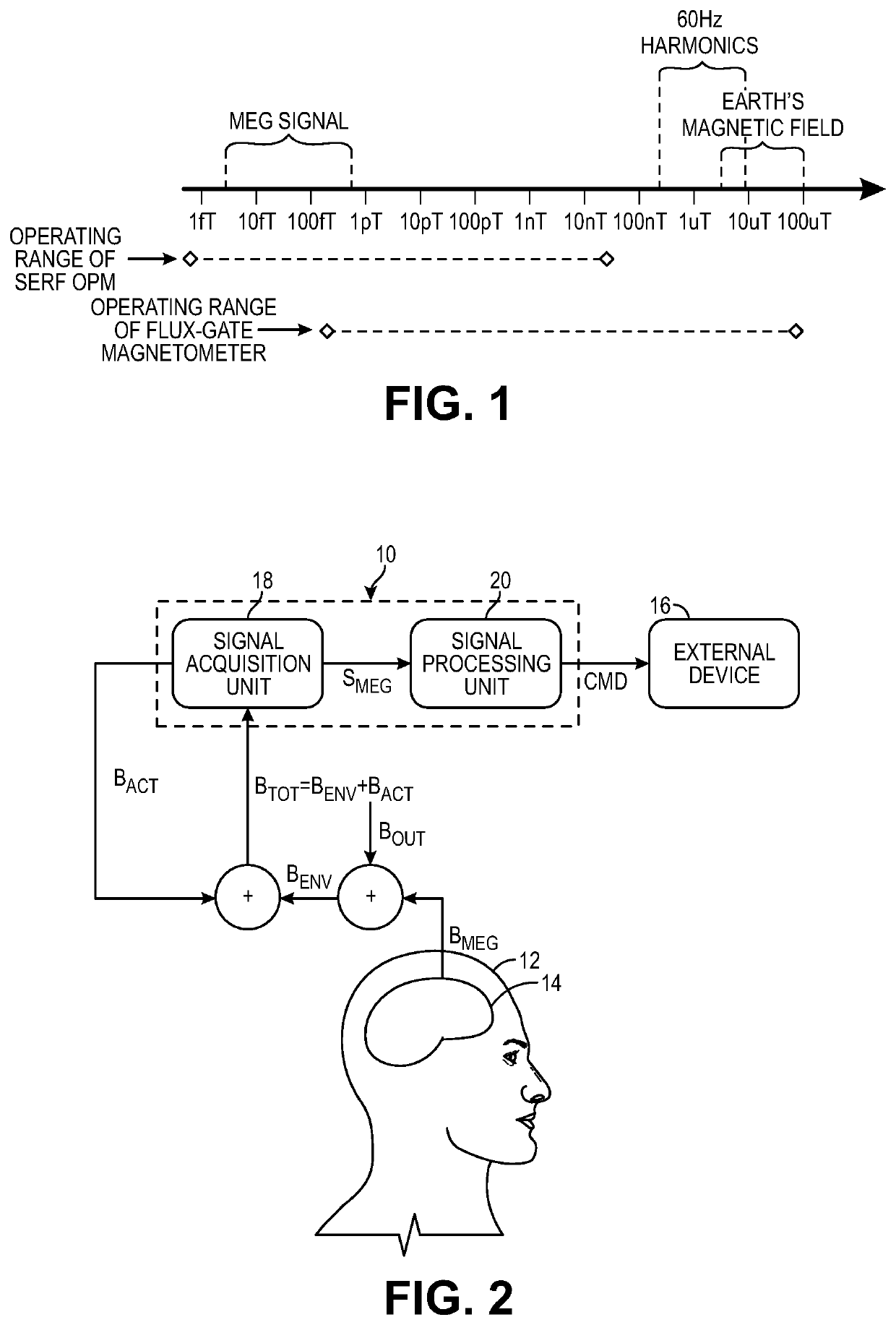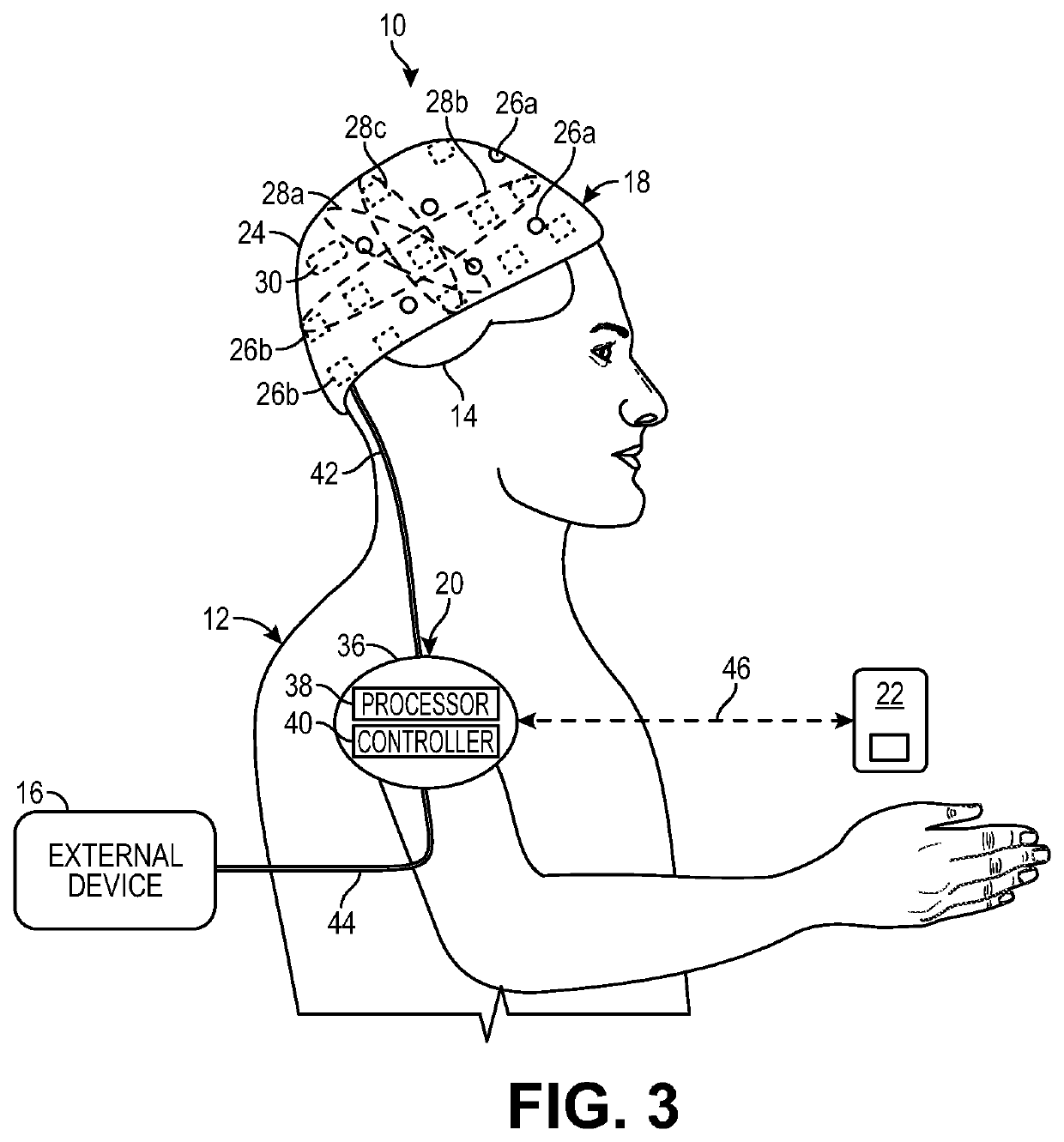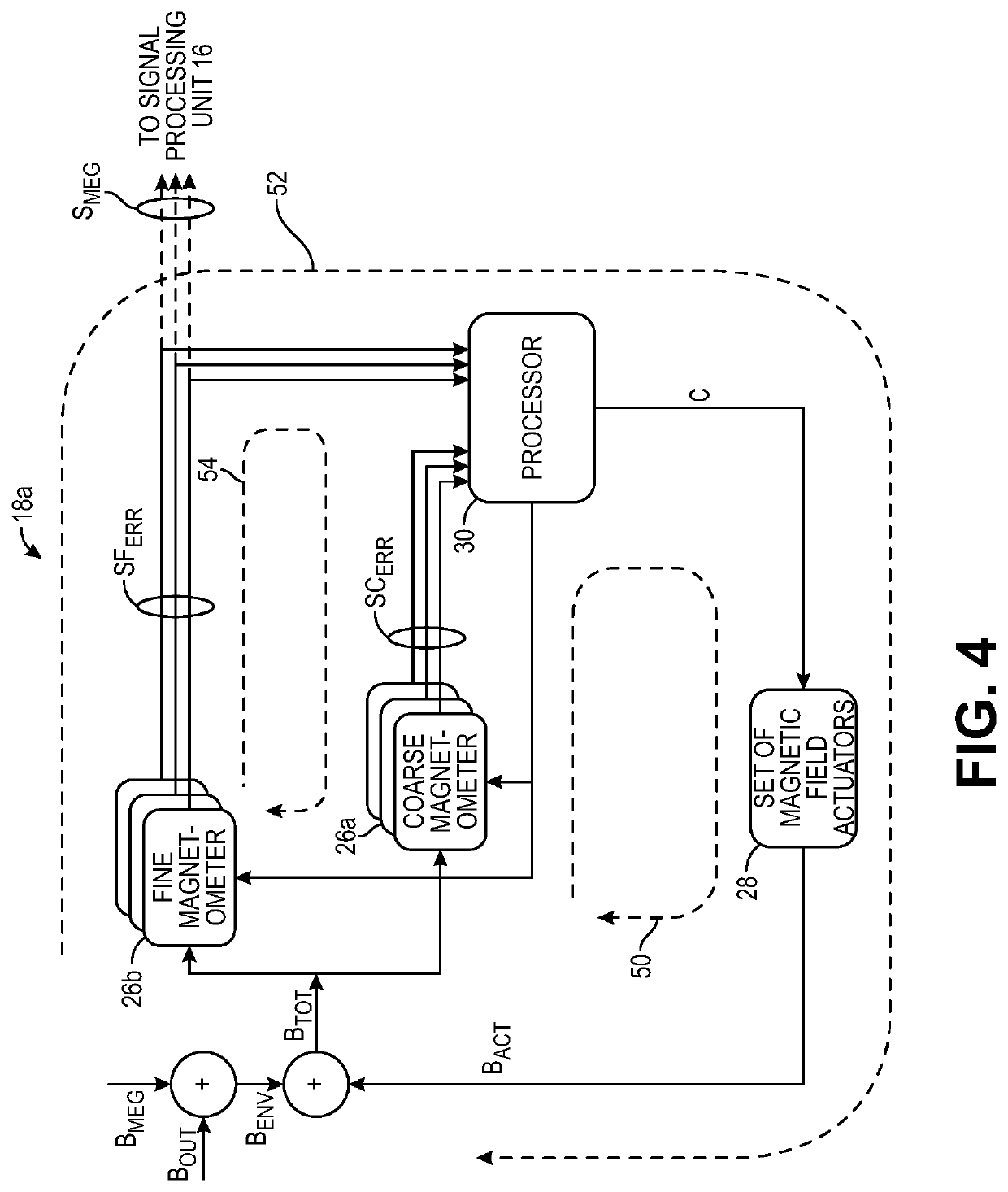Nested and parallel feedback control loops for ultra-fine measurements of magnetic fields from the brain using a neural detection system
- Summary
- Abstract
- Description
- Claims
- Application Information
AI Technical Summary
Benefits of technology
Problems solved by technology
Method used
Image
Examples
Embodiment Construction
lass="d_n">[0076]Significantly, the neural activity measurement systems (and variations thereof) described herein are configured for non-invasively acquiring magnetoencephalography (MEG) signals from a brain of a user while effectively suppressing the outside magnetic field without the use of magnetically shielded rooms, and identifying and localizing the neural activity within the cortical structures of the brain of the user based on the acquired magnetoencephalography (MEG) signals.
[0077]The neural activity measurement system described herein may take the form of a brain computer interface (BCI) (also known as a neural-controlled interface (NCI), mind-machine interface (MMI), direct neural interface (DNI), or brain-machine interface (BMI)), which converts the neural activity information into commands that are output to an external device or devices for carrying out desired actions that replace, restore, enhance, supplement, or improve natural central nervous system (CNS) output, a...
PUM
 Login to View More
Login to View More Abstract
Description
Claims
Application Information
 Login to View More
Login to View More - R&D
- Intellectual Property
- Life Sciences
- Materials
- Tech Scout
- Unparalleled Data Quality
- Higher Quality Content
- 60% Fewer Hallucinations
Browse by: Latest US Patents, China's latest patents, Technical Efficacy Thesaurus, Application Domain, Technology Topic, Popular Technical Reports.
© 2025 PatSnap. All rights reserved.Legal|Privacy policy|Modern Slavery Act Transparency Statement|Sitemap|About US| Contact US: help@patsnap.com



